When it arrived, the two knurled rings were stuck.
|
Eyepiece on a B & L TMM.
|
Plywood grippers: Bottom at left; Top at right.
|
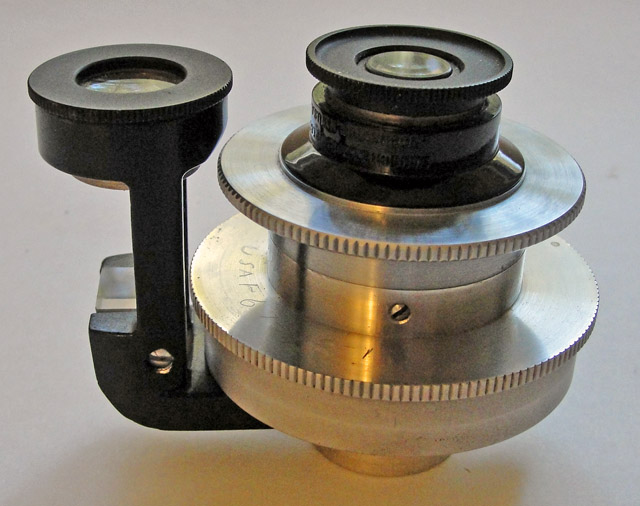
|
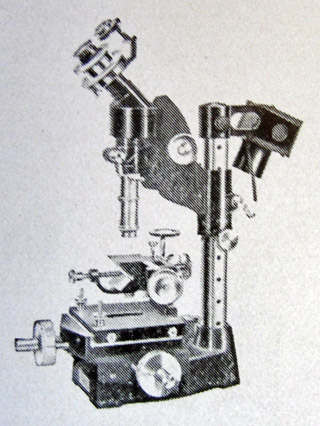
|
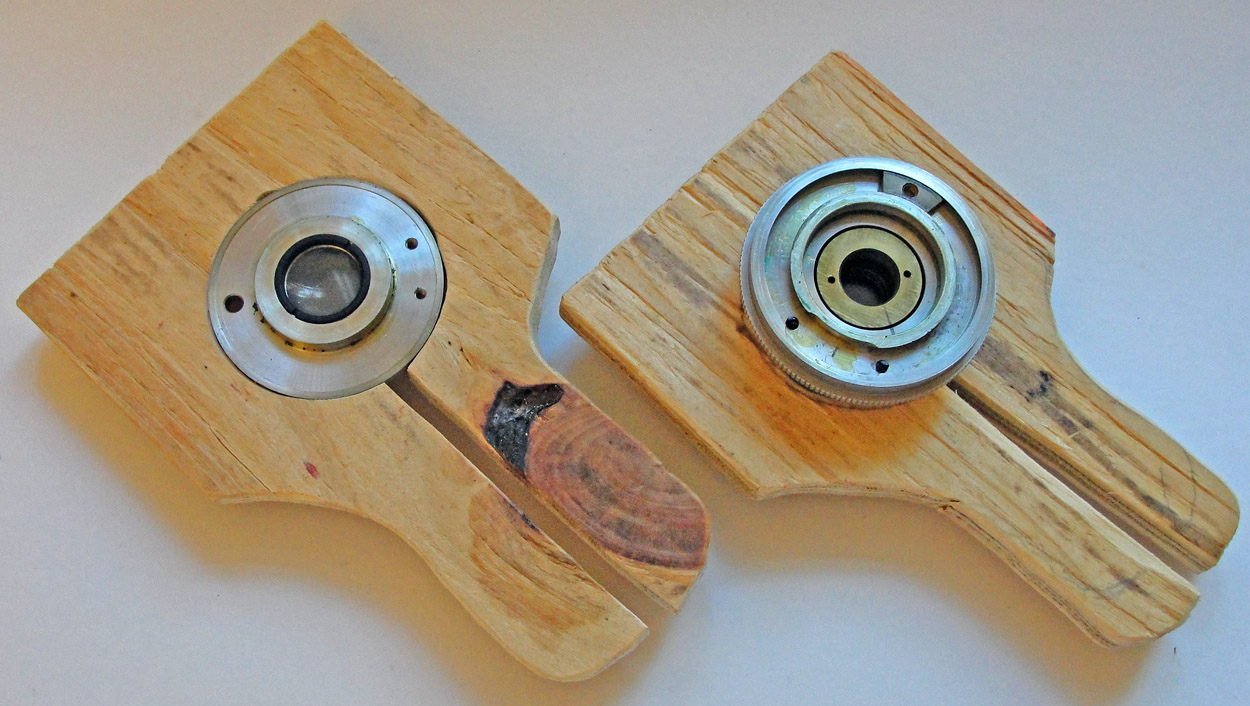
|
To see the gummy remnants of the original lubricant, right click the image of the two plywood grippers above.
To remove the bottom section, I used the bottom gripper and a wooden parallel clamp as described below.
|
The only defect is a tiny chip on the
right angle prism, invisible during operation.
|
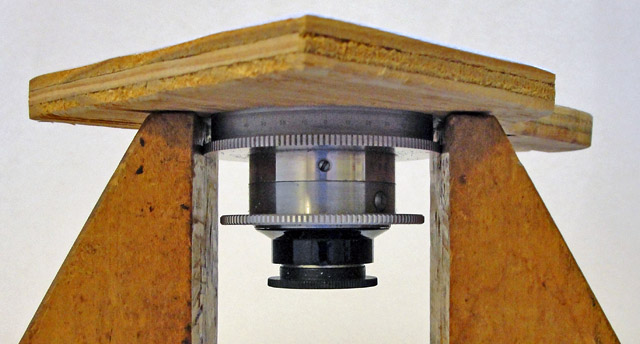 My
first step after removing the vernier reader (shown at right) was to
use the grippers to grasp the two knurled rings and then twist them
relative to each other, which eventually loosened the top section (the
smaller ring at left). Then I used the bottom gripper to grasp the
bottom section as shown at left and then simultaneously
twist and lift the bottom ring to extract it. I held the parallel
clamp in a heavy vise, which greatly simplified this step. My
first step after removing the vernier reader (shown at right) was to
use the grippers to grasp the two knurled rings and then twist them
relative to each other, which eventually loosened the top section (the
smaller ring at left). Then I used the bottom gripper to grasp the
bottom section as shown at left and then simultaneously
twist and lift the bottom ring to extract it. I held the parallel
clamp in a heavy vise, which greatly simplified this step.
I applied forces on the order of twenty foot pounds of torque and twenty
pounds of axial force. Making the grippers and disassembling the eyepiece took about ninety minutes.
|
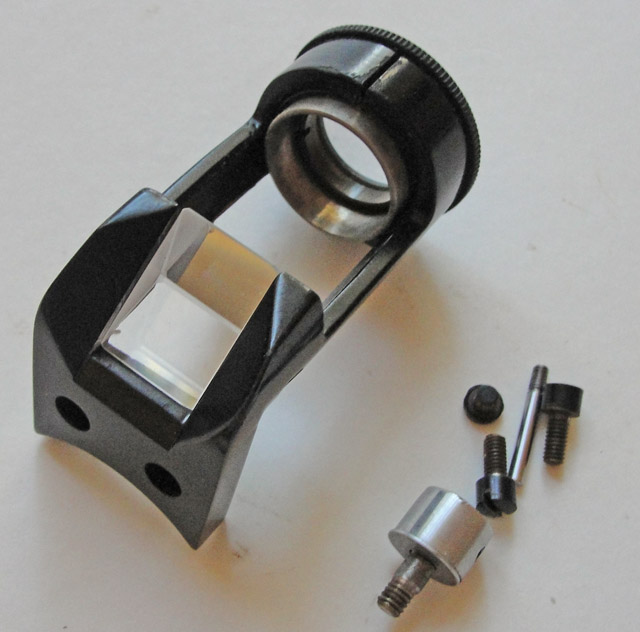
|
Before you can separate the
bottom section from the body of the eyepiece, unscrew the locking
clamp's tiny lever, shown above right.
The scales read in degrees and minutes, with the upper scale ruled in 1/3° steps.
|
The lower scale is a vernier that divides each 1/3° step into twenty parts.
|
The bottom's line is the one marked "0".
The bottom also carries the 40° - 70° sector.
|
The upper section rotates the plain line.
|
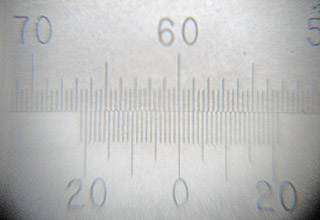
|
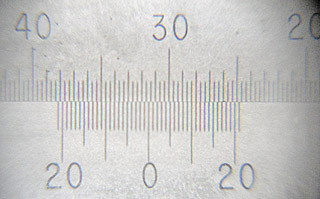
|
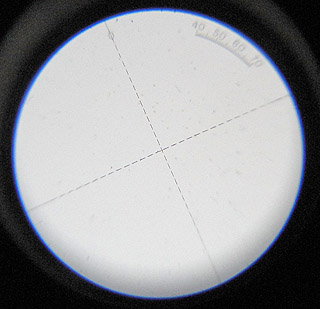
|
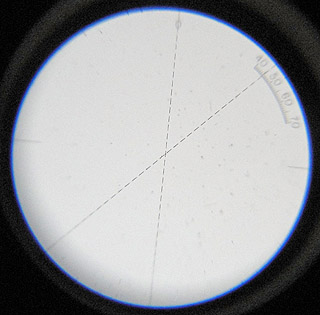
|
One important function of these crosshairs is to align with the flanks of a screw thread so that the
X-Y table of the toolmakers microscope can be used to measure the pitch and pitch diameter of the threads.
This is an older eyepiece than a second one that I have, which has a cylindrical finger hole.
|
In this view, the bottom section of the eyepiece is locked in position.
|
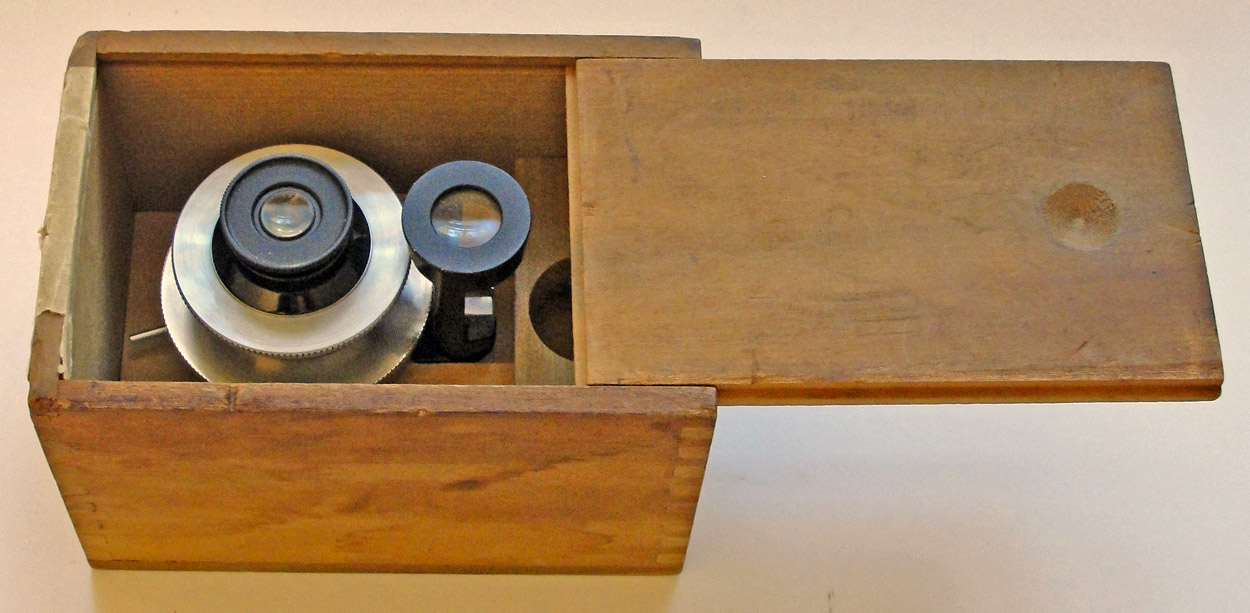
|
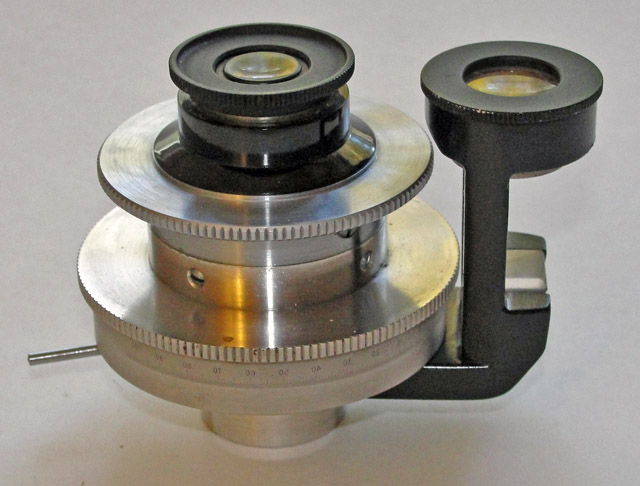
|
The center optics enable the
crosshairs of the eyepiece to be rotated to align with the enlarged
image of the toolmakers microscope's objective lens,
and the off-axis optics facilitate reading the mirror-imaged and inverted degree wheel of the larger knurled bottom section.
This eyepiece will work on any microscope that has a 23 mm eyepiece tube. About two dozen cotton Q-tips and 2 cc. of paint thinner were expended in this process.
|



 My
first step after removing the vernier reader (shown at right) was to
use the grippers to grasp the two knurled rings and then twist them
relative to each other, which eventually loosened the top section (the
smaller ring at left). Then I used the bottom gripper to grasp the
bottom section as shown at left and then simultaneously
twist and lift the bottom ring to extract it. I held the parallel
clamp in a heavy vise, which greatly simplified this step.
My
first step after removing the vernier reader (shown at right) was to
use the grippers to grasp the two knurled rings and then twist them
relative to each other, which eventually loosened the top section (the
smaller ring at left). Then I used the bottom gripper to grasp the
bottom section as shown at left and then simultaneously
twist and lift the bottom ring to extract it. I held the parallel
clamp in a heavy vise, which greatly simplified this step.





